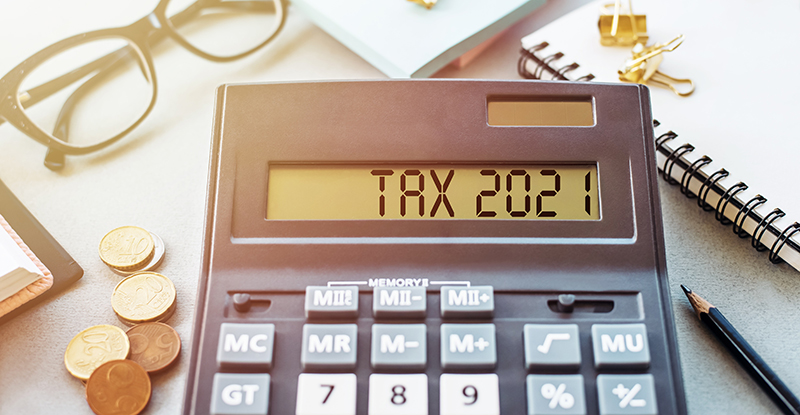
This year marks yet another pandemic tax season. And just like last year, when you file your personal income taxes for 2021, it will be important to note some changes in how federal COVID-19 benefits affect your taxes. This article will break down how to factor these benefits into your personal income tax filing, as well as explain a slight change to the simplified way of declaring work-from-home expenses introduced last year.
Remember that since April 30 is a Saturday this year, May 2 is the deadline to file your personal income taxes. If you or your spouse or common-law partner are self-employed, your filing deadline is June 15; however, all tax payments must still be made by April 30.
Taxable emergency benefits
At the start of the pandemic, taxable government benefits such as the Canada Emergency Response Benefit (CERB) and Canada Emergency Student Benefit (CESB) were not taxed up front. However, by late 2020, these types of benefits were subject to a 10% tax withholding.
These tax withholdings continued throughout 2021, so there should be less of an impact on the tax bills of Canadians this year compared to last, when it comes to declaring emergency benefits. Recipients may still be responsible for paying additional taxes on the benefits received, as will be explained later.
Taxable government support benefits (both open and closed) include:
- Canada Emergency Response Benefit (CERB)
- Canada Recovery Benefit (CRB)
- Canada Recovery Sickness Benefit (CRSB)
- Canada Recovery Caregiving Benefit (CRCB)
- The Canada Worker Lockdown Benefit (CWLB)
Individuals are reminded that taxable government supports such as the ones mentioned above should be considered personal income. And BC residents who earned more than the provincial basic personal amount of $11,070 within the 2021 calendar year must pay taxes.
While 10% was withheld for taxable benefits, you may still be responsible for paying additional taxes, depending on your overall income in 2021 as well as your marginal tax rate, which will depend on your total taxable income and province you file in. This online calculator can help you determine your marginal tax rate, as well as estimate how much tax you will owe.
It’s also worth noting that if you received either the CRB or CERB but ended up making more than $38,000 in taxable income, you will be responsible for paying back $0.50 for each dollar of CRB/CERB received over $38,000.
Anyone who received emergency benefits will receive a T4A or T4E tax reporting slip from the government. If you received benefits that have already been taxed at 10%, you should note the dollar amount of these taxes (located in Box 022 of your T4A slip) and include this amount in line 43700 (total income tax deducted) of your personal income tax filing.
$100 increase to declaration of working-from-home expenses tax deduction
Last year, the newly launched temporary flat-rate method allowed employees who worked from home due to COVID-19 to claim up $400 in remote working expenses as a tax deduction. This year, that amount has increased to $500. The temporary flat-rate method does not require employees to keep track of any expenses or submit any forms from their employer.
For employees who incurred significant remote working expenses, they still have the option of using the traditional method, known as the detailed method. Using this method, employees may be eligible to receive funds beyond the $500 maximum for the temporary flat-rate method, but it will require a signed Form T2200(S) or T2200 from their employer as well as other details.
Here is where you can access further information on how to claim your work-from-home using either the Temporary Flat Rate Method or the Detailed Method.
Tax rules can be complex. This article is not intended as tax advice, and you should not make tax decisions based solely on the information presented. You should seek the advice of a chartered professional accountant before implementing a tax plan or taking a tax filing position.
Shane Schepens, CPA, CA is a Partner at Clearline CPA. Shane’s focus is on Canadian tax planning, such as reorganizations, estate, and succession planning for medium and small private companies. Shane is a member of the CPABC Taxation Forum. Visit our personal finance section for more tax-related tips.



